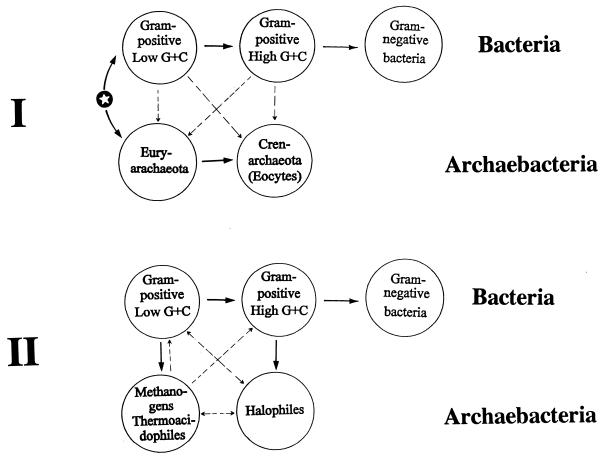FIG. 23.
Possible scenarios to explain the evolutionary relationship between archaebacteria and gram-positive bacteria. Scenario I assumes the archaebacteria to be monophyletic; to explain various other gene phylogenies where archaebacteria show polyphyletic branching within gram-positive bacteria (e.g., Hsp70, GS 1, GDH, dihydroorotate dehydrogenase), lateral transfer of genes from different groups of gram-positive bacteria to the archaebacteria (as indicated by thin dashed arrows) is postulated. Scenario II, on the other hand, suggests that the ancestral archaebacterial phenotype may have evolved from gram-positive bacteria (solid arrows) in response to antibiotic selection pressure and that the genes involved in antibiotic resistance (which may include many genes involved in the information transfer processes) were subsequently acquired laterally by other gram-positive bacteria to create additional monoderm prokaryotes with an archaebacterium-like genotype.

